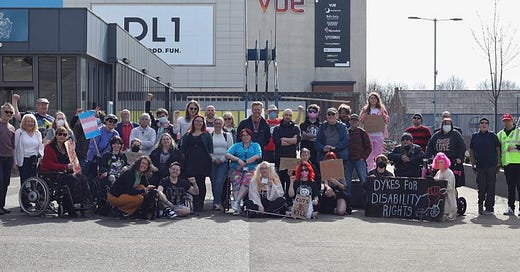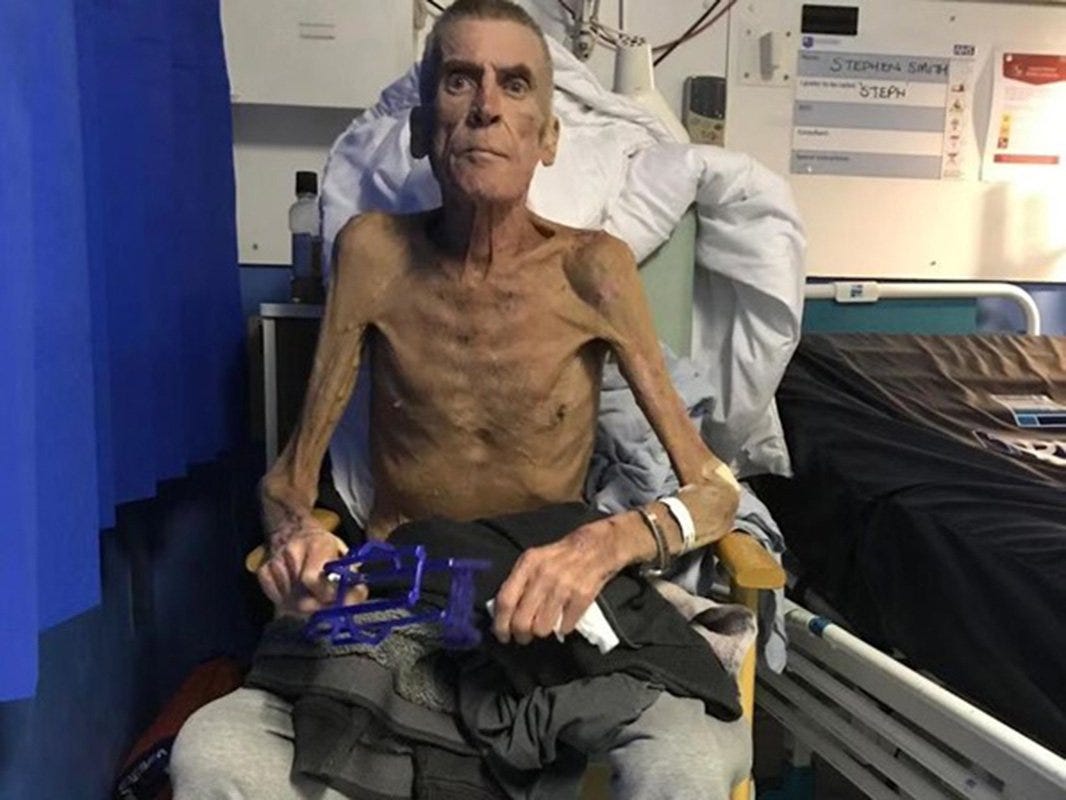The Democide of the Disabled
UK POLITICS: Spring budget unveils 'Austerity 2.0' with fresh cuts to disability benefits—history warns of deadly consequences.
By James Waterson, North East Bylines
The spring budget has been announced and a new round of cuts to social security for disabled people is in the pipeline dubbed ‘austerity 2.0’. So let’s delve into what happened the first time around.
Austerity was a political choice
Austerity first came to our shores through David Cameron‘s Conservative-Liberal Democrat coalition in 2010.
On 9 September 2010, Chancellor George Osborne announced a new fiscal policy that would disproportionately affect disabled people – and ultimately kill thousands of vulnerable people, triggering an intervention by the United Nations.
When social security cuts were first implemented, it saw the removal/reduction of income from hundreds of thousands of people. As a result, disabled people started killing themselves. Disabled people, their families and organisations and begged MPs to track the death toll. They were ignored.
This is when Calum’s list was born. Disabled people and their loved ones came together to count their dead. You can view the list here alongside the stories that led to the deaths.
No way out
Austerity continued with every change of prime minister. No matter who was steering the ship, disabled people were still being thrown overboard.
I was forced into a sabbatical from university because my needs weren’t met – trapped in a situation with no way out. I was given around £30 a week to live on, to cover all expenses.
There was a particular point that I remember vividly. I was suffering from kidney failure at the time and had no money for a bus to get to my doctor’s appointment, so I walked the hour there and the hour back. I was sick on the way and collapsed once, arriving too late to be seen. It was all for nothing. As I lay on a grass verge on the side of a road, I questioned how do I go on?
Reality check
Even cancer patients aren’t safe. After chemo, some are forced to prove in court that they’re too ill to work.
A recent report by the BBC discovered that teenagers who are moved from Disability Living Allowance (PIP replaced this for adults) to PIP once they turn 16, found that one third are denied this crucial social security measure. Yet the Labour government still wants to target PIP specifically.
The reality is that 82% of tribunals involving disabled people are overturned. It actually costs the Department for Work and Pensions (DWP) more to implement their policies than to just pay disabled people what they are legally owed.
Cause and effect
So, what happened when austerity hit those moving from Incapacity Benefit/Severe Disablement Allowance to Employment Support Allowance? Between 2011 and 2014, 81,140 people died waiting for the money they were owed – many worrying about bills to the end.
(Caption: DWP Mortality statistics)
Any hopes that austerity would end after the 2015 general election were quickly dashed. George Osborne remained as Chancellor, but the Tories didn’t have the Lib Dems to restrain them now. The result was a four-year benefit freeze from 2016 to 2020.
As predicted by the Joseph Rowntree Foundation, it drove another 400,000 people into poverty. The current projections state that 250,000 people will be forced into poverty. 50,000 of them are children. In addition, the Trussell Trust published statistics recently that found almost one in five people receiving universal credit and disability benefits used a food bank within the last month, and 77% have gone without essentials in the past six months.
That first benefit freeze was indicative of an attitude that pervaded the entire UK government, particularly the DWP. It generated a mindset at all levels within the DWP that it was dealing with the undeserving poor, and they needed to be taught a lesson.
Fit for work
In 2017, just one year after the start of the benefit freeze, Stephen Smith, who suffered from chronic obstructive pulmonary disease and osteoarthritis, had his Employment Support Allowance (ESA) payments stopped. A work capability assessment (WCA) found 64-year-old Stephen “fit for work”.
Photographs emerged of an emaciated Stephen in hospital after pneumonia left him unable to walk. He died two years later. There is a direct link between the Chancellor of the Exchequer talking about people “sleeping off a life on benefits” at the Conservative Party Conference, and the death of people such as Stephen Smith.
In 2018, Jamie Oliver applied for Personal Independence Payment (PIP) twice. He was denied both times. In August 2019 a date was set for an appeal hearing in September. However, Jamie, who was suffering from terminal cancer, had died on 9 April 2019. Jamie’s brother, Dave Smith, offered to bring his ashes along for them to decide whether he was fit for work or not. As you can see, things were not improving.
(Caption: Image by Dave Smith)
NHS pressures
I hope the government has the NHS prepared for these proposed cuts. Because stress makes many health conditions worse. During the first round of austerity the NHS saw a significant increase in disabled people needing access to services because they were becoming more sick due to stress and anxiety that exacerbated their conditions.
While disabled people are trying to manage their health with an ever-dwindling NHS, they are also simultaneously being asked to prove just how sick they are. The forms to claim PIP are 50 pages long and you have one month to return it. Fifty pages of describing everything you cannot do.
What does this do to someone just trying to survive? Or the effect on their families who are often providing unpaid care, who then have to complete a tome to prove to the government that their loved one is incapacitated?
All it should take is a letter from the person’s doctor to let the DWP know that this person cannot work. But the DWP are well known for ignoring these letters, and have been known to hide them, stating that they have been ‘lost in transit’. So, claimants pay extra for recorded delivery to prove forms were sent.
Waiting
Once your forms are in you then have to have a gruelling face-to-face assessment going over everything in your application. This takes at least an hour. Many assessment centres are inaccessible. Arrive and can’t get in? You’re marked a no-show and must start over.
It will have taken you months to get to this point. And once you go through the assessment, you can currently face up to a 34-week wait for an answer.
This whole process – which has driven disabled people to suicide, has increased their impairments and put immense pressure on loved ones – is all because of the supposed fraud rate. In 2023–2024, the fraud rate for PIP was 0.1%, a decrease from 0.2% in the previous financial year. The majority of this was down to clerical error.
Job seekers
Another bright idea from the government is to give more money to job seekers on universal credit and reduce the amount given to disabled people who are unable to work. I’d highly recommend reading this article on what it’s actually like to seek work as a disabled person.
Once you get through the door you can often find that ‘disability friendly’ workplaces are far from it. For example, it took a friend of mine two years to obtain a chair suitable for their desk. This was two years of completely unnecessary agony which impacted their work performance.
Work culture needs to change. A rigid 9–5 work week doesn’t always work for disabled people. Many have no control over when they are able to have a sufficient output during a 9–5 day. But many can work effectively on flexible terms. The attitude around this absolutely must change.
I believe, alongside many in the disabled community, the onus should be on employers to make workplaces and hours suitable.
Double standards
The irony of this situation is that disabled people are seen as inspirational on one side of the coin, but on the flipside, we are a burden to society and when we die in our thousands there is a distinct lack of outcry.
Disability hate crime has risen dramatically and people are openly hostile to a disabled person taking up space in public. Imagine living each day in fear of public hostility or discrimination. Every day you live life on the edge and there are very few safe spaces to climb down from that edge.
“Scrounger” still echoes in my mind every single day. Yet most disabled people are in work. It’s truly bewildering that this Labour government would look at targeting a tool such as PIP, that helps support working disabled people. It is cruel and unnecessary considering that there is actually an apparent alternative.
Stronger together
Resilient as we always are, disabled people have banded together and brought about several disabled peoples’ organisations (DPOs). Their aim is to fight back against the horrors and the persecution that each successive government has placed upon us due to ‘welfare reform’ – aka cuts.
In 2014, the Spartacus Network, led by Sue Marsh, produced a Beyond the Barriers report for parliament showing the impact the reforms were having on disabled people’s lives. Linked below are DPOs that are still active since the first round of cuts.
The Disability News Service also do an incredible job of keeping the public informed.
Within a couple of weeks of the Labour government’s first spring budget, a new grassroots campaign called ‘Crips Against Cuts’ was launched and has garnered lots of support online, with their movement growing daily.
Redistribution of wealth
Instead of targeting disabled people to make savings, there is an alternative. Dale Vince, a Labour Party donor and multimillionaire has called for a wealth tax. He is part of the campaign group ‘Patriotic Millionaires UK’. He states a 2% tax on accumulated wealth over £10 million would affect just 20,000 people as opposed to the proposed cuts which will affect hundreds of thousands of working and non-working disabled people. It’s the difference between poverty or death for some and one less holiday for a millionaire. It begs the question: what are the true motives behind Rachel Reeves and her cuts?





